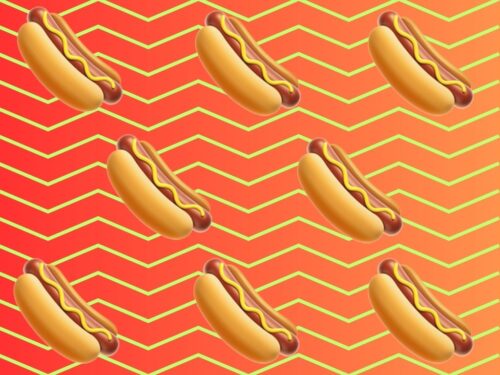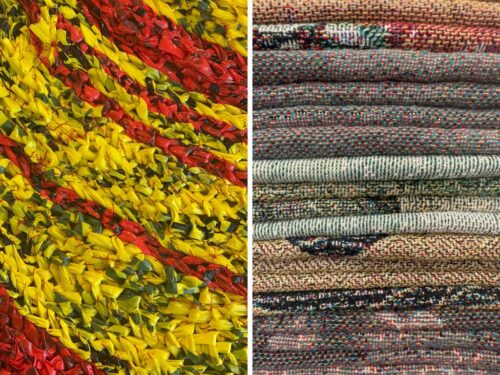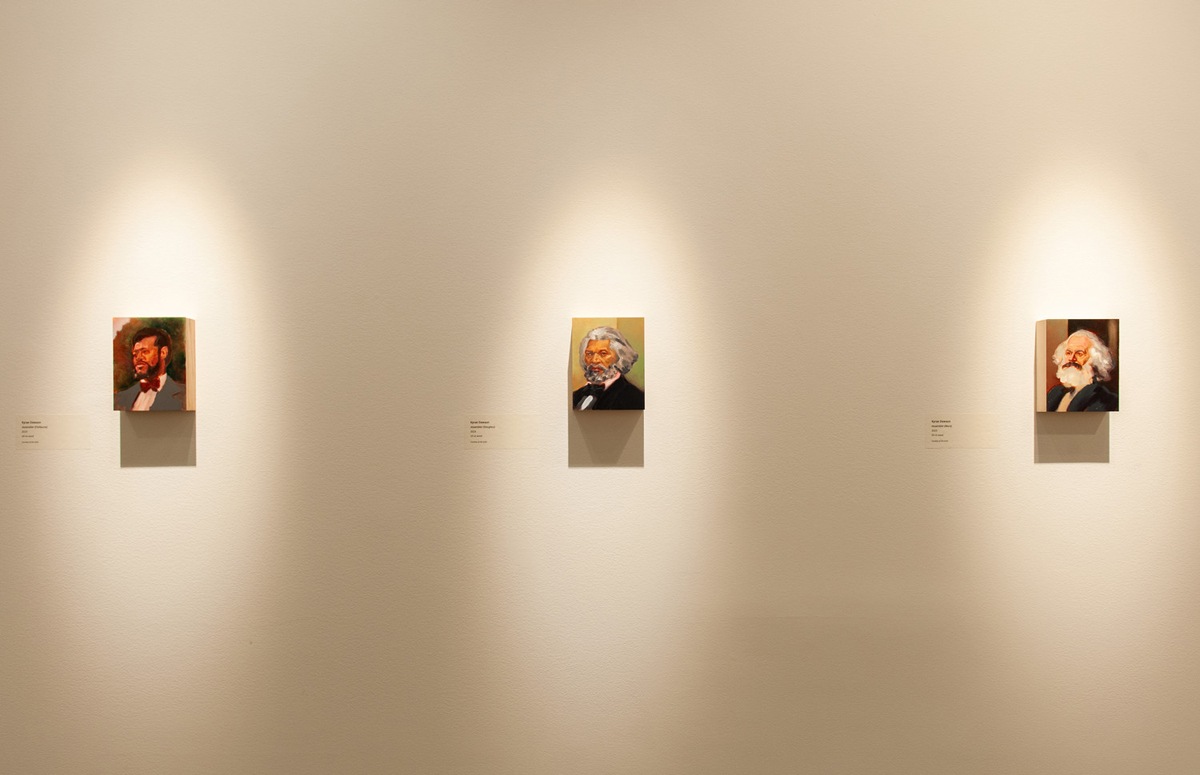AV: Their storyboard begins with “star crossed,” a wall-mounted sculpture made of acrylic, enamel, and flock on steel. The sculpture is composed of layered imagery, of which the main focus is a large fence structure separating a dog and fawn. The fence’s pointed, arrow-like edges make it impossible for the animals to unite, forcing them apart indefinitely. Butterflies, lovebirds, and twirling ribbon adorn the scene, further emphasizing the whimsical and romantic nature of the piece. The deer has star cutouts throughout its body that form constellations, not unlike gunshot wounds fired by a hunter.
As a companion piece to “petite apocalypse,” “star crossed” serves as the introduction to the story of doomed lovers, separated by circumstance and their innate differences that seemingly run deeper than simply one being a domestic animal while the other is a forest creature. Lucien’s work echoes loss and hope, childhood dreams and the comfort they still bring as we face the harsh realities of life. As we leave behind homes and loved ones in the pursuit of something bigger than ourselves, one cannot help but grasp onto such comforts a little tighter.
FS: Like much of Lucien’s work, “petite apocalypse” is simultaneously inviting and jarring. The fence alludes to partitions, divisions and borders as the artist is Haitian-American and references to the diaspora appear through some of the other works too. The partition elements recall Morel Doucet’s recent exhibition at Galerie Myrtis, and I’m intrigued by how both artists with Haitian roots use these industrial elements with vernacular architectural applications. Steel is a refined, durable material but with added heat it becomes malleable. Systems too can seem extremely robust, yet with force and chemistry can be mended.
The physical labor is evident through the visible slag from the plasma cut edges, however, I find myself distracted by the welds in the wall hanging works, longing for a smoothing out of these elements and finer attention to detail in the methods of attachment to match the caliber of quality in the rest of the work.
The idea of revolution, history and empire is further alluded to by a banner into which the phrase “LIBERTÉ OU LA MORT” ( “Liberty or Death!”) has been plasma cut. This motto was coined with the First Haitian Empire, an elective monarchy created in 1804. A small apocalypse, a revolution, or a coup could be seen as a beginning rather than an end, alluding to the turbulent revolutionary history of Haiti and its current crisis.
AV: Lucien continues that train of thought in “pye bwa (mourning the one they pierced),” a sculpture composed of cast iron royal palm leaves. Royal palm leaves are depicted in the Haitian flag, centered as one of the main national symbols. The collection of materials for the sculpture simulate the immigrant experience, having had to undergo a journey themselves in order to be cast after arriving at Baltimore. Lucien describes the leaves as receiving new life that “honors the fallen for what they have given to the living.” Immortalized in iron, the royal palm leaves are symbolic of Haitian liberation, the freedom that is rightfully won after battling against loss, hardship, and colonization.
As a Caribbean person myself, I feel intimately connected to Lucien’s work. It is infused with elements of Haiti’s history, and compelled me to research the phrase “LIBERTÉ OU LA MORT” after being so touched by the piece. I learned it is the title of the The Haitian Declaration of Independence written by Jean-Jacques Dessalines in 1804. These details feel like elements of an open love letter to Lucien’s cultural heritage, infused with pride and admiration for Haiti and its people. This sense of pride for your homeland is something I can deeply relate to and clearly envision in the artwork.
FS: Overall, I feel both enthusiasm and melancholy looking at Lucien’s work. The former because they work with steel and iron—and I love seeing heavy duty materials brought into the gallery space—and sadness because of their references to the bloody history and current crisis in Haiti, as well as alluding to migration. While my own migratory experience is different, the cast palm leaf reminds me of natural objects that I have carried with me from home. Leaving a home behind is both an end and a new beginning.



















